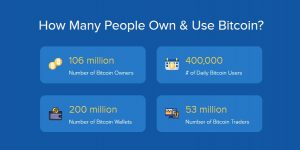It just so happened that I dealt with blockchain technology for the first time 2 years ago. Before then, I had heard about BitCoin as a digital currency, but I had no idea what it was all about. However, I would like to emphasize that I have been associated with the Financial World for a long time as an active stock market investor. Nevertheless, the subject of BitCoin and cryptocurrencies was always suspicious for me because I did not understand it, and what is more I did not want to understand it.
What I have learned in 2 years is that blockchain is not just about cryptocurrencies, and also that all cryptocurrencies are not the same. Let’s start with the basics. Blockchain is a technology that transmits and stores information about Internet transactions, i.e. it is something like a digital transaction book. This information is arranged in the form of consecutive data blocks. Blockchain solves the problem of data transmission security. In the world of finance, we also need a third party (e.g. a bank) to ensure transaction security – centralized finance. In Blockchain, security is achieved through a distributed network of users, the breaking of which would require the hacking of all validation stations simultaneously, which is unrealistic in practice. Therefore, the term DeFi – Decentralized Finance – has come to be.
In Lean Management, we talk about a competitive advantage when 3 conditions are met:
- lower price
- better quality
- shorter implementation time
Blockchain beats centralized finance in these 3 areas. Payments for transfers of funds are made using a Coin belonging to a given blockchain – e.g. Ethereum, Solana, Bitcoin. For the latest blockchains, such as Solana, these costs are often a fraction of the value of USD. And it doesn’t matter whether the transfer is within a country or to the other side of the world. My transfer of information or funds from the European Union to China can cost less than 0.01 USD. With centralized finance, these costs are often several hundred times higher. Therefore, each blockchain has its own digital currency that handles transfers. Now let’s look at the execution time – in the case of blockchain, it depends on the closing time of a given block in the chain. For example, the Solana blockchain can handle up to 50,000 transactions per second. By comparison, Visa handles around 2,000 transactions per second. As I have already said, thanks to blockchain dispersion, it is simply safer than any bank or centralized institution.
Digitized currencies can be created on a specific blockchain. They use a given network as a medium, and are called Tokens. The Lean Management Token is an example of such a currency embedded on the Ethereum blockchain. For every $ LEAN transaction, a commission is paid in $ ETH. So $ ETH is a Coin and $ LEAN is a Token. Blockchain provides the ability to create your own digitized currencies, and this is the best thing about it! When building a global community around a specific topic – such as management – there should not only be an opportunity to communicate, but also to exchange services and goods. Your own decentralized, safe and cheap currency is essential for such a project. Such a currency can be used for transactions between community members, and thanks to blockchain these transactions are completely safe and transparent. It is a revolution and the last link in the process of globalization.
Hence the question – why are people afraid of blockchain technology? In my opinion, it is related to bad communication regarding this technology. Articles that are mainly related to spectacular failures of projects, such as the LUNA project recently, get into the media. The situation is almost the same as in the 90’s with the “dot-com” projects – there were many of them created, and most of them were lost. But there were also projects like Amazon.com, which revolutionized the world. The Internet in the 90s is blockchain in the present years. Just as not many people imagined the scalability of the Internet and the transfer of our lives to this world 20-30 years ago, now not many people imagine the world of finance without banks and intermediaries. And this is actually the key question – who is most bothered by cheap, scalable, fast and safe decentralized finance? Let everyone draw their own conclusion. I am sure that in the coming years there will be projects based on blockchain technology that will revolutionize our lives, and in a few years, everyone will agree that it was quite obvious – as is the case now with the Internet.
Finally, let’s look at some facts. How does the situation with the number of Bitcoin holders look?

Source: https://www.buybitcoinworldwide.com/how-many-bitcoin-users/
Let’s also focus on the adoption of blockchain in relation to the Internet:

Source: https://cryptopotato.com/deutsche-bank-sees-how-the-internet-compares-to-blockchain-technology/
Blockchain is at the beginning of its adoption. It’s like the situation with the Internet in the early 90’s, and hence the fear of something new – the same fear that over 90% of the population had about the Internet. There are many institutions for which blockchain poses a threat to their influence. I am personally delighted with this technology and the possibilities it offers. Building global projects that are safe, fast and cheap to operate is the missing link in globalization. I’m keeping my fingers crossed for blockchain and I am happy to be able to join this revolution!

Dr. Bartosz Misiurek is a co-founder of a few start-ups like Leantrix, Lean Community, Leancoin, etwi, Lean Global Consulting, Sallar. He is a CEO at LeanTrix Ltd., Leancoin Ltd, Do Lean IT OU, and a Member of the Board at Astral Hodling OU. Author of the book “Standardized Work with TWI: Eliminating Human Errors in Production and Service Processes.” He works as Sr Manager and TWI Global Coach at Automotive Company.






